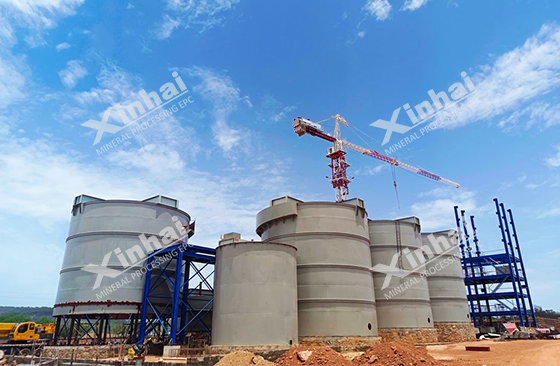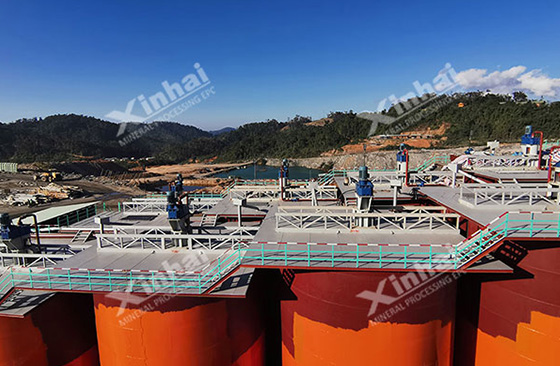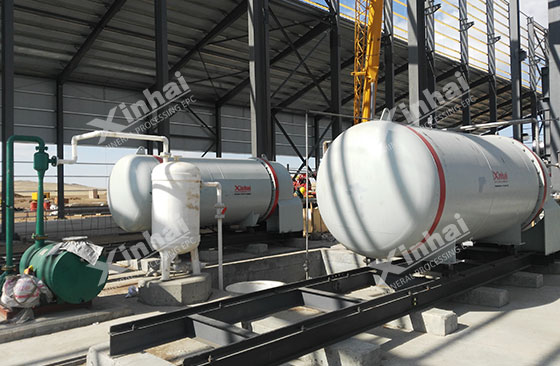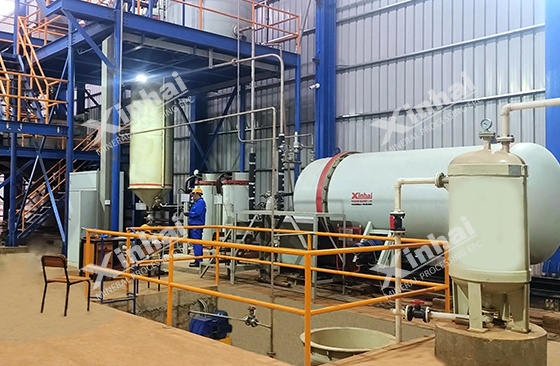
Carbon in Pulp (CIP) is a widely used process in gold ore dressing. It involves adding activated carbon directly to cyanide pulp, allowing gold to be adsorbed by activated carbon during cyanide leaching, and then recovering gold from the gold-loaded carbon.
The core of the gold CIP process is to use the high adsorption properties of activated carbon to directly adsorb dissolved gold from cyanide pulp. The surface of activated carbon has a large number of micropores and mesopores, and these pore structures provide a large number of active sites for gold adsorption. During cyanide leaching, gold exists in the form of gold-cyanide complexes (Au(CN)2-), and activated carbon captures these complexes by physical adsorption and chemical adsorption.

Ore preparation: Gold ore is crushed, ground and other means to achieve the required particle size requirements, usually more than 70% of the particle size is within the range of -200 mesh.
Cyanide leaching: The ground ore is mixed with a cyanide solution to dissolve the gold to form a gold-cyanide complex.
Carbon adsorption: Activated carbon is added to the slurry during cyanide leaching. Activated carbon quickly adsorbs the gold-cyanide complex.
Desorption of gold-loaded carbon: After the gold-loaded carbon is separated from the slurry, it enters the desorption equipment for desorption, so that the gold is desorbed from the activated carbon into the solution.
Electrolytic or displacement recovery of gold: The desorbed gold-containing solution enters the electrolytic equipment or displacement equipment for gold recovery.
Activated carbon regeneration: After the desorbed gold-loaded carbon is washed, it needs to be regenerated for recycling.

High adsorption rate and high recovery rate: The carbon slurry method can achieve efficient gold extraction, and the gold recovery rate is usually over 90%.
Strong adaptability: It is suitable for various types of gold mines, including oxide ores, primary ores, sulfide ores, etc.
Simple process flow: The main equipment includes leaching tanks, adsorption tanks, desorption equipment, electrolytic equipment, etc., which are easy to operate and easy to realize automatic control.
Good environmental protection: Relatively less wastewater and waste residue are generated, which reduces the construction and maintenance costs of tailings ponds and reduces the impact on the environment.

High capital and operating costs: The establishment and operation of a CIP plant requires a large investment in equipment and skilled labor.
Complexity: The process is more complex than heap leaching and requires precise control of several parameters.
Activated carbon wear problem: Despite many effective measures, some of the worn fine-grained gold-carrying carbon is still lost in the tailings, reducing the gold recovery rate.

The gold CIP process itself has the advantages of high efficiency, high recovery rate and strong adaptability, and occupies an important position in gold beneficiation. Carbon slurry adsorption gold is a type of cyanide gold extraction process. In addition, there are carbon leaching gold extraction, heap leaching gold extraction, etc. In actual beneficiation plants, how to choose the gold extraction method depends on the properties of the gold ore and the processing volume. Therefore, it is recommended to conduct mineral processing test analysis and design a suitable gold ore beneficiation process plan.
To find out more about our products and solutions, please fill out the form below and one of our experts will get back to you shortly.